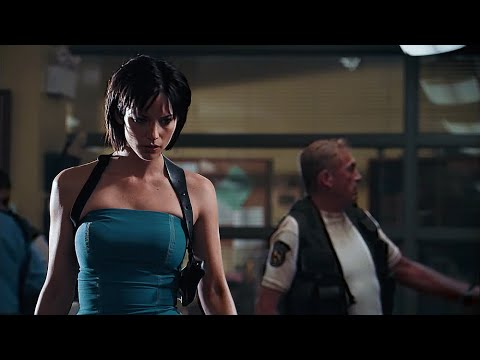
The “Resident Evil” film franchise is synonymous with failure in many movie-goers’ eyes, both the casual and critical alike. These action-horror flicks featuring Amazon warrior Milla Jovovich are based on an extremely popular series of games that were, at least before the release of this film and all subsequent sequels, chilling tales of survival horror. While there were still gore-ific monsters, jump “scares,” and spooky locations/effects/scenarios, the movies leaned more and more into over the top action and away from the slow, encroaching dread the Capcom games were famous for.
This decision to put Milla Jovovich, who is, by the way, playing a character who does not feature in the game at all, in exceedingly sillier shoot-outs with each entry alienated many fans of the games to say the least. It’s well-known that Ms. Milla and franchise Helm Master, Paul W.S. Anderson, are a married couple who enjoys making these movies the way they want to make them. This decision also served to activate a series of “call-outs,” where fans blamed Anderson for using the “Resident Evil” IP to make his wife look like a badass. This article isn’t about agreeing or disagreeing with people who were upset or pleased by the tone these two successful filmmakers struck with their long-running saga. Making changes to an IP you have the rights to is every creator’s right, and I would in many cases encourage it to a healthy degree. What I would like to take some time for is a closer look at the second film in the RE legacy. I believe that Alice’s inclusion as a character in this script, not Milla Jovovich’s acting, offers a great example as to why viewers have often admitted to being alienated by this silver screen siren.
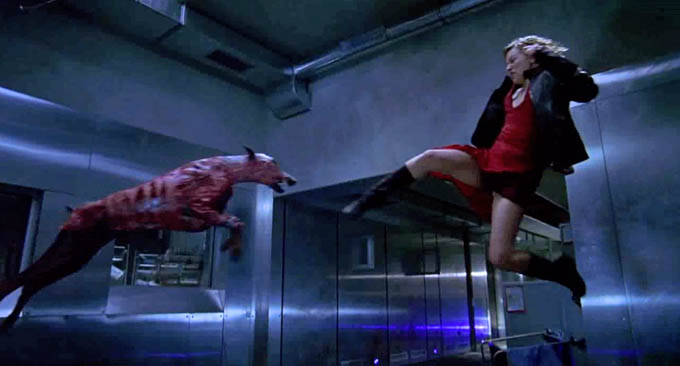
The first film, also starring Milla Jovovich, was decidedly more tame by “Resident Evil” standards (an important distinction). Jovovich begins the movie in her Alice persona (a character name I don’t think is even mentioned in this first outing) as a blank slate. She is a fragile woman recovering from memory loss, and a band of strong mercenaries who don’t take any s*** tell her how the world of the movie works for quite some time. As these strong mercenaries are killed off, Alice regains her memories, and by extension, remembers that she, like Neo, knows Kung Fu. The stronger she gets, the weaker the surviving mercenaries, especially the previously tough as nails Rain (played by the type cast into oblivion Michelle Rodriguez), become. Alice gains ability and confidence, and because she levels up, she is able to take care of her wounded comrades… until they all die in the end of course.
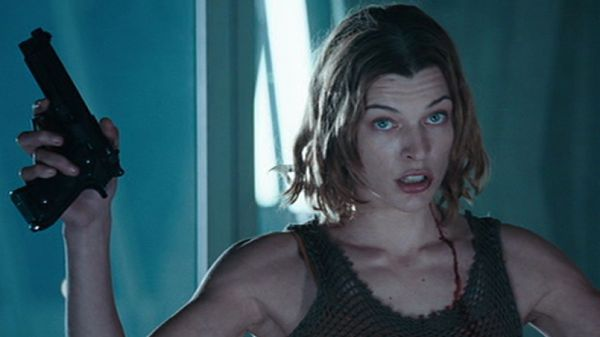
This isn’t a complicated character arc, but I think it was a successful one for what it set out to do. The personalities surrounding Alice functioned efficiently in leading Alice towards her growth, and most importantly, she didn’t begin the film with a picture-perfect ability to defend those she comes to care for. Alice is at no point competing for protagonist attention from anyone. We start with a cold open of mass office murder, and immediately after the last head rolls (literally), we wake up with a disoriented Alice conked out in the running shower. We follow her through the ensuing horrors she comes to face, and she is the one who learns about key elements like the artificial intelligence called “The Red Queen” alongside the film’s audience. As things grow dire, it’s Alice who we project onto, and it is her we look to for a solution to the whole big mess. Challenges arise like the breaking of pipes as her friends make their escape through the sewer tunnel or the attack of a giant meat bag called the licker while a derailing train barrels towards the exit with a doomsday timer ticking steadily in the background.
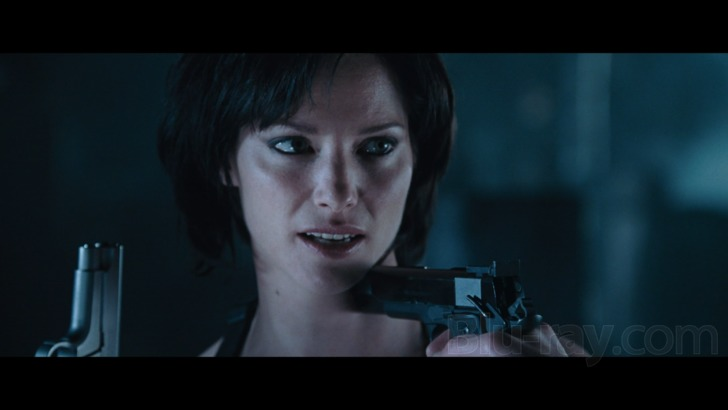
Speaking of lickers, it is not Alice who discovers an entire hive of them in the sequel once the plot device, mutating virus has overtaken the city. The character we follow in “Apocalypse” is in fact a character from the original game, Jill Valentine. Already problems arise, not with Sienna Guillory’s performance, which I loved upon release and still love to this day, but with her befuddled inclusion. You see, Alice was created to maintain elements of the Jill Valentine from the games. Anderson was inspired by the iconic character, and he admitted to thinking about her when writing/directing Alice. So if he already, in his own mind, had his Jill Valentine, then why did he add a second one in “Apocalypse?” Yes, that’s an easy answer. Fans, likely not thinking about cinematic story structure, were probably asking for her to be brought in after the first movie didn’t showcase her. A more complicated question is “who does the film think is the real Jill Valentine?” If “Jill” can be used now as less the name of a woman but more the title of a leading zombie slaying heroine, then we must ask, “Will the real Jill Sandwich please serve up!?”
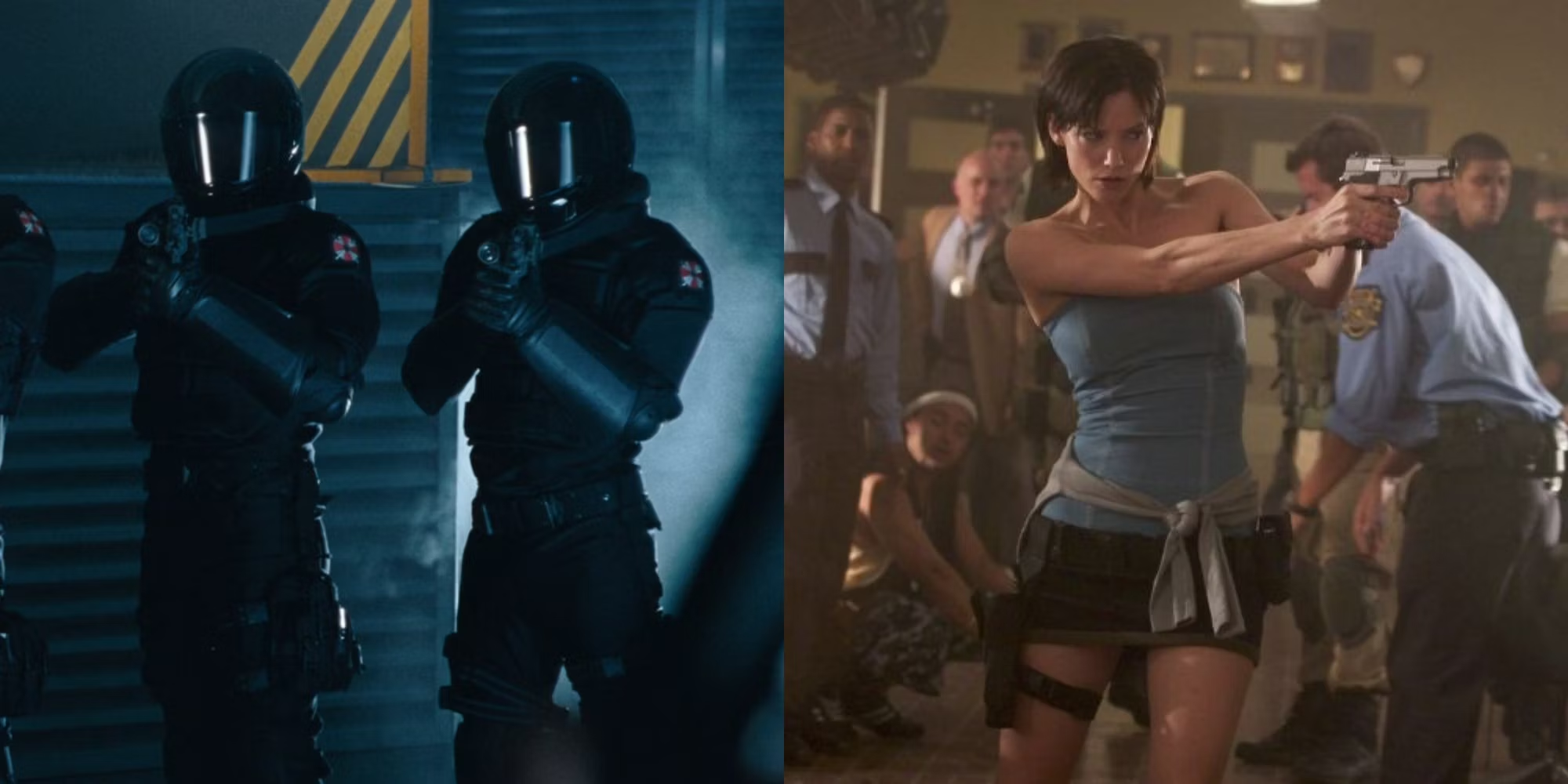
I can tell you who mine is. While I am a huge fan of Milla, I would of course vote for Sienna’s turn in the classic blue tube-top. Her performance is arresting, no cop pun intended, and she just grabs me more as a character in this context. Perhaps my fawning over her in Resident Evilzzzz One and Three played a role, but I don’t think it did to a large degree. You see, it doesn’t matter who the real Jill is to me or you or any of the gamers who went to see this or even Paul B.S. himself. It only matters who the script chooses. The script holds the proverbial rose, but you know those seasons of “The Bachelor” when the dude doesn’t seem super sure and just kind of like “I mean, either of you will do?” Unfortunately, this lack of decision makes for an unsatisfying selection, both in the context of “The Bachelor” and on the streets of Raccoon City.
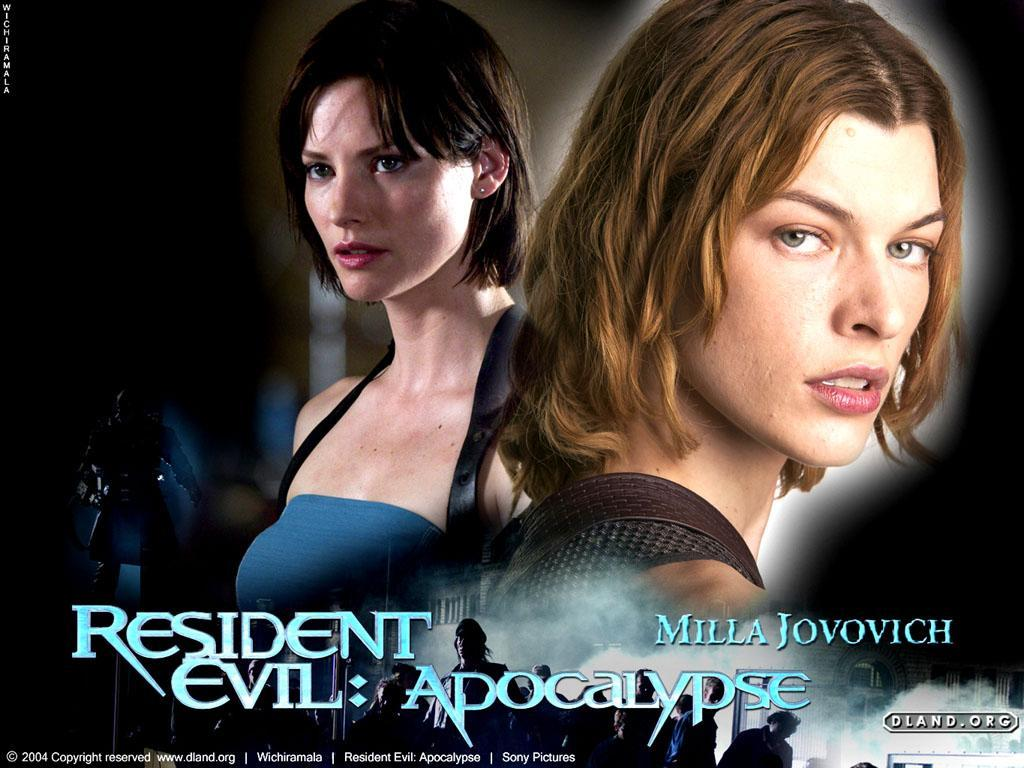
But Collin? What if they are doing a Michelle Rodriguez thing where Alice has to build confidence to be as confident as her by the end of… Let me stop you right there, respectfully. Alice starts this movie with all her memories, confidence, and a *beeping* shotgun. Other than losing a little hair and dealing with a little coughing (ok, and some weird cgi bumps moving along her arm), she’s ready to rock from the word go, and by the end of the movie, she’s still rocking. Jill starts the movie confidently too. She takes off her F me heels and puts on her F me boots, grabbing her gun and saving everyone in the police station within a few seconds.
Jill, unlike Alice, who discovers quickly that she’s Spider-Man due to some unexplained connection with the virus, has to deal with that pesky thing called humanity. She hurts a little more (which is one of the things that makes her more compelling), sure, but she ends the film just as dedicated to doing good and motivated to end the evil corporation behind the biohazard. Neither character bends to allow for the other’s arc to come full circle, because neither of them really need one another. Sure, Alice can fly a motorcycle through a church window to kill three lickers at once while Jill has to conserve ammo and make strategic decisions about how to pick them off one at a time, but they’re both monster killers. Other than being statistically more powerful, Alice has nothing to offer Jill in the way of leadership, a helpful perspective shift, mental health checks, community building, guidance, or companionship. Beyond a few exchanges of “so, you’re also a cool chick,” there’s simply no ground to cover. This disconnect makes them feel like they’re just two of the same kind of character taking turns being on screen. Now, we still have our overarching question, don’t we? Who’s the real Jill?
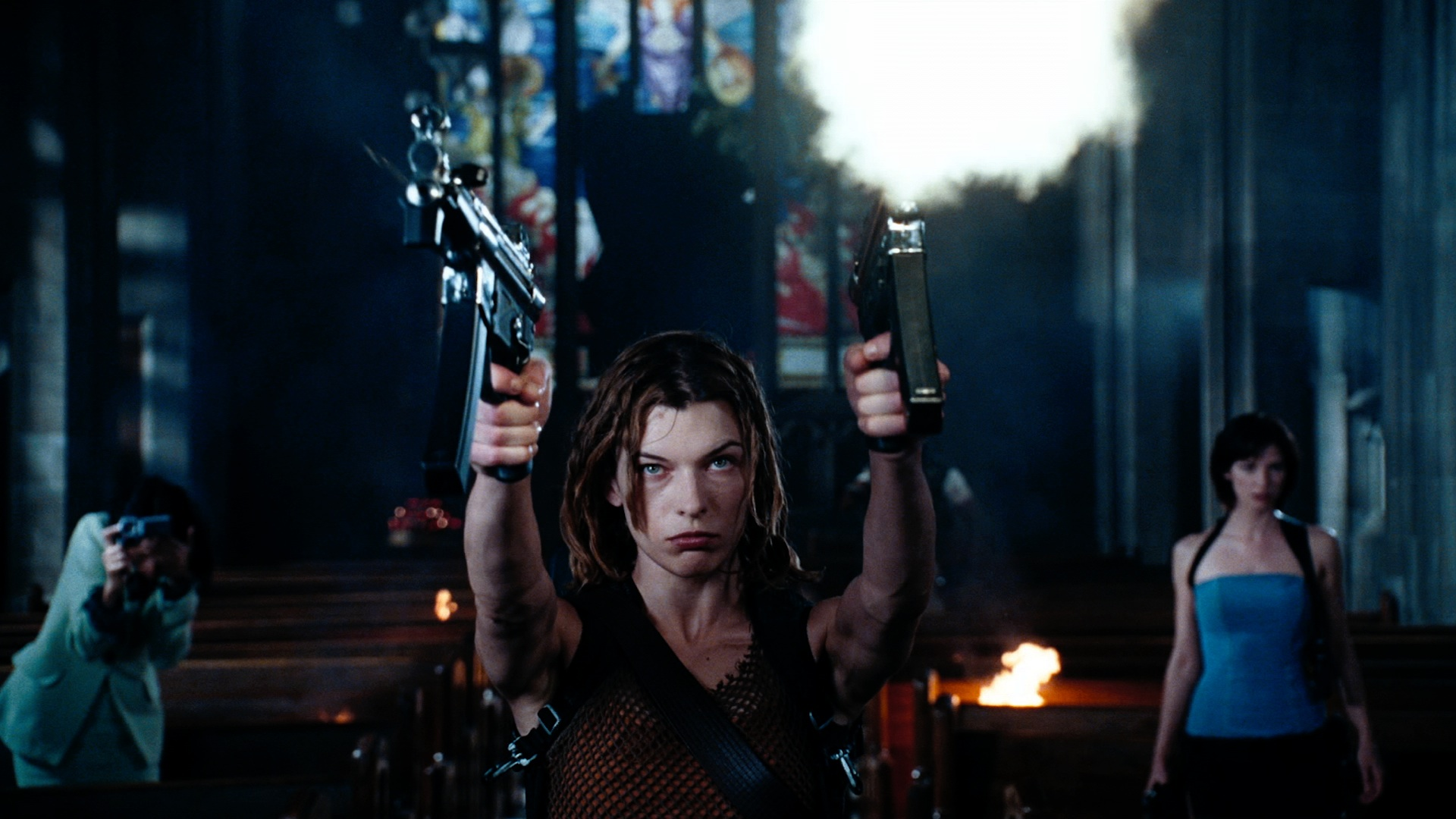
Let’s take it back. We already talked about how these lovely, lethal ladies begin the movie. Their confidence and skill incarnate up against unimaginable odds. Let the Mario Kart chime begin! Alice’s early scenes are recycled from the last movie, which already makes her feel a little copy and paste. We see nothing of her motivation in this film, and if you don’t know what she went through in RE 2002, you’re F-ed. After a clever panning shot of Jill changing shoes in her apartment, one that seems conceived by the great QT himself, we see come clippings that tell us Jill discovered this outbreak in an early stage and was fired for being a whistleblower. The television comes on and a panicked newswoman (who still bravely showed up to work in the midst of a war zone and deserves respect) explains that the outbreak is, well, bad! As the attacks on the TV build, Jill turns on her police radio. The music crescendos into epic territory and her ex-partners call for backup with breathy voices. Jill holsters her weapon, looking snatched and game, and struts for RuPaul herself all the way to the station, killing like five zombies and saving multiple people. With one line she delivers to a by-the-books boss man, “I told you, shoot for the head,” we are with her. Even if you’re not, you get her.
Alice- 0, Jill- 1
Jill helps the cops control panic at the border of the city. Umbrella is trying to control who can and can’t leave the city during its time of crisis. One understandably pleturbed cop is Sgt. Peyton Wells (played by the hunky Razaaq Adoti) who asserts that they have to do what they can to protect the citizens. Jill agrees and joins his cause, so already we know what she’s doing and why she’s doing it. We get a sense of how she relates to her fellow cops and even how she relates to the city. This is her city, and we are watching her do what little she can to effect positive change within it. In this scene, Peyton is bitten, and Jill defends him. We know what that means, and while we don’t know exactly what the situation is between our two hotties in blue, they do hold hands for a “too long for just professionalism” kind of way. One of Jill’s companions is now in peril. The stakes have been raised…
After getting a shotgun, Alice coughs and remembers that tubes were in her head. She finds more guns and finds clothes that fit perfectly on her fabulously toned body.
Alice- 0, Jill- 2
I have already talked about the church lickers, so I won’t belabor the point. Think about the progression of the scene. Jill finds the church and helps her wounded friend inside. She searches the place for help and secures the perimeter. SHE finds the lickers and dodges their assaults alongside Peyton and the other survivors. There’s also a TV lady (the very good Sandrine Holt) making a story of the whole incident. We see Jill be a little miffed with her like “oh, so now you people want my GD story!” This is a lengthy sequence, and she even finds a disturbed priest feeding meat to his zombie sister, because of course he is in this cracked out city. Jill does everything she can to protect Peyton and the TV lady from the lickers until it looks like their time is up…
Alice breaks through the glass ceiling, as if hyper aware of her ironic existence, and kills all the lickers in some showy shots.
I know what you’re thinking. This is a point for just Jill right? Wrong! This scene is actually fine, and not really a point for one over the other. If campy action is what the mad scientist ordered, then this is fine as a one off deus ex machina. This is Alice’s moment to be Gandalf on the eagles. Note that this happened only at the rarest of times in “Lord of the Rings,” and please note that Gandalf and Frodo have dissimilar places in the screenplay. So for now, the scores still stand.
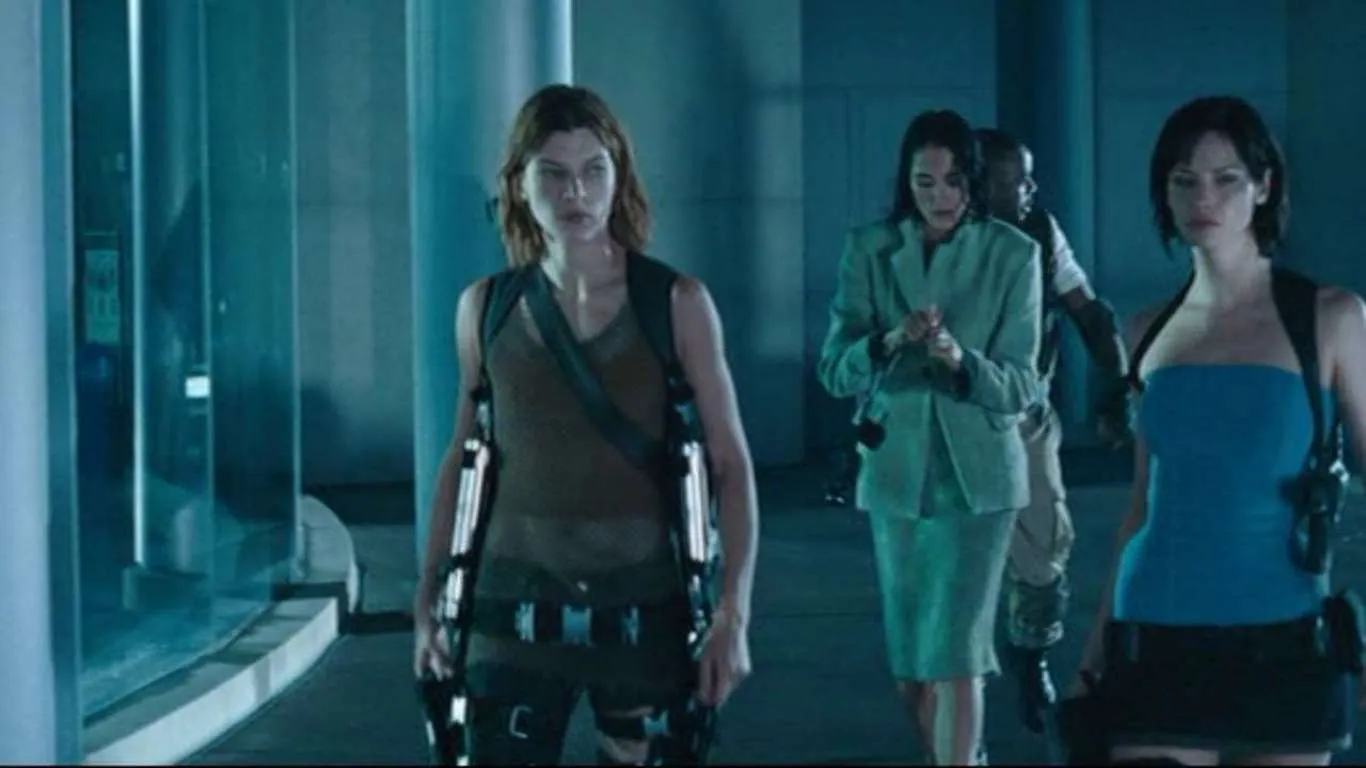
This is when the movie really starts to pick up the pace, so we’re going to echo the same energy and speed up this article. Break out those twin machine guns and run alongside me! It’s gonna get cray!
- Alice and Jill fight zombies in a graveyard. Jill stops Alice from killing an infected Peyton. Alice explains infection and how you just gotta kill people who get bitten.
a) Alice- 0, Jill- 3: Jill is the person who is affected by the potential death of Peyton. She decides to keep him alive, and so once again, we’re with her, thinking about when she might have to pull that trigger. Alice is Gandalf, explaining in her wisdom why Jill is wrong. (This article is now becoming Jill is Frodo and Alice is Gandalf.) - Nemesis shoots Peyton. Sad… Jill engages Nemesis. Alice stops Jill from fighting Nemesis, even though she’s the only character with actual motivation for killing the monstrosity. It just took out her single confidante in this hell hole! But because “screenplay,” Jill fucks off with TV lady and Alice has a showy fight with no stakes against Nemesis who she regards with a knowing whisper “Nemesis…” once again being Gandalf, like “I remember that fiery monster with a big whip lives down there…”
a) Alice- 0, Jill- 4: We should NEVER have left Jill at this moment. We needed to stay with her as she reels from the realization that her partner is gone forever. This is Frodo at the edge after Gandalf falls into the pit. Seeing Alice in a flashy battle with the big brute accomplishes nothing thematically. It’s all surface level schlock. In fact, this probably would have been a great place for Alice to just die. The superwoman gone, it would then be Jill’s responsibility to find another way. A room full of lickers (it always comes back to the lickers) wouldn’t be so easy the next time. - Jill picks up a very funny hitchhiker (the underrated Mike Epps) and investigates a school to find a missing girl. The girl is their ticket out of town, so yeah, high Salisbury. The TV lady dies. Sad… Jill finds the girl and comforts her. We follow Jill as she defends the little girl and makes her feel ok about all the terribleness that is life for them at the moment. She asks Angela her name and really leans into a maternal thing. She adjusts her tone and body language. She’s a seasoned cop, and we can see how good she is at taking care of others beneath it all. She fights off a horde of zombie dogs for quite a while, doing some incredibly brave things and even whacking one with a pan at a certain point. She is LITERALLY moments from escaping when her plan doesn’t work, we think she has to figure something else out in a second’s notice, and that’s when… yep… deus ex Alice happens for the second time. In what can only be described as baby does Arnold, Aice casually ignites the dogs with a cigarette and saves the day, literally leaving Jill in the dust (LITERALLY) as she takes credit for saving the girl. We have spent so much time watching Jill be her savior, and now, all of a sudden, for no reason, it is Alice. Angie tells them her sob story, and when it becomes too much for this precious soul to muster strength around, who does Angie hug? ALICE! SHE FUCKING HUGS THIS SMOKER SHE MET TWO SECONDS AGO AND NOT THE WOMAN WHO LED HER THROUGH A HAUNTED ELEMENTARY OF RABID DOGS AND DEMENTED CLASSMATES!? This is the most egregious moment of Alice hijacking Jill’s narrative. If they wanted Angie to have a “we’re both infected” thing with Alice, it would have had to come MUCH later.
a) Alice- 0, Jill- 8: Yes, I doubled her score. Throw a cigarette at me. - This leads us to the big dumb ending. Alice absolutely asserts her dominance from the point of rescuing Angie until the credits roll. I think Jill has maybe three or four more lines after that. This would be like if Gandalf came back when Frodo and Sam leave Galadriel’s woods behind. By the way, I’m here, and I will continue to do the heavy lifting. You don’t have to grow or learn. We good! Anyway, Jill and company are captured by bad guys. Alice fights Nemesis again, but stupider. Jill fades into the background during the final battle and ensuing escape. We don’t see her again until she shows up to save Alice from an Umbrella lab in the epilogue.
a) Alice- 4, Jill- 8: I had to do it, folks. This ending certainly believes it was all about Alice the entire time.Even though Matt, the only person to make it to the surface with her in the first film, hasn’t been mentioned other than in PTSD flashbacks up to this point, his presence suddenly comes back in full force as if the plot was always leading up to her finding out the monster was him the whole time. She gets four points here because there is nothing about Jill at all in this tail-end situation. Alice develops new powers and gets her memories back… AGAIN! There’s no new ground to walk on. I mean they tried! They had Milla walk down a GD building for no reason. I mean… zombie moaning out loud!
Final Score: Alice- 4, Jill- 8
The movie told me, without a doubt, that Sienna Guillory is the real Jill. She has relationships with characters and the stakes of the situation affect her greatly. She confronts difficult obstacles and rises to meet them in human ways. She struggles and feels pain and experiences great loss. She helps mentor and shepherd the vulnerable. She is the person we follow out of the city. Most importantly, whenever a horrific or action-packed something or other happens to her, there’s a character motivation behind it. We can relate to her. Yes! I know these connections are very, very, VERY simple. But, simple threads are better than none.
Alice, unfortunately, is only doing stuff because she can do them. The filmmakers were so concerned with whether or not she could, that they didn’t stop to think if she should. This problem of Alice breaking through scenes with no effort continues throughout the series and just gets more and more bombastic. It is compelling to see a character assess people, places, and things to form an opinion about what to do next. It is less compelling to see a person wriggle about because something vague is science-fictioning in their body and then pop off into a blaze. There’s no glory if the character remains at a static blaze, and the best moments in future movies are when we see Alice at her least powerful. So remember folks, what makes a true Jill isn’t the physical power of the character, it’s the symbolic power behind the narrative which supports their definitive place on screen.